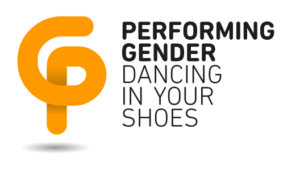Memories of movement
For 2 years, different choreographers work together with people from the local communities. These are a group of women from various neighborhoods in Tilburg and a group of people with Former Dutch East Indies and Moluccan roots from 's-Hertogenbosch and the surrounding area.
In autumn 2022 two choreographers visited The Netherlands: Javier Vaquero (traveling dancemaker from Paso a 2 - Certamen Coreografico de Madrid) and Vita Osojnik (traveling dancemaker from City of Women) worked with the communities in ‘s-Hertogenbosch and Tilburg.
Both residencies were welcomed with a lot of positivity, power and pleasure by both Dutch communities.
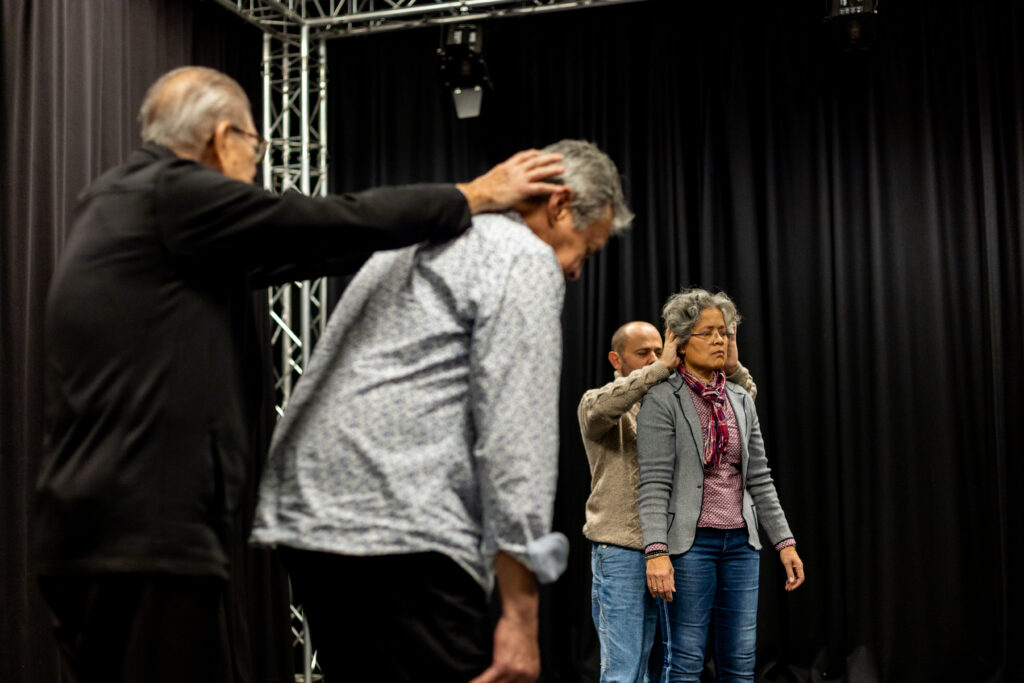
Club SoDa in Tilburg
A small group of Tilburg woman, of all ages, crisscross the studio. Their eyes touching objects in space: a lamp, a curtain, a chair. To explore.
It is the first workshop of two, by choreographer Javier. After warming up the muscles, the women were asked to transform themselves in statues. To sculp their bodies into different poses, into different characters.
In short time the room was filled with kings, queens, farmers, mothers, and knights. But how does it feel to stand in such a position? What does such an attitude say about the position? What associations do you get? What memories does it evoke?
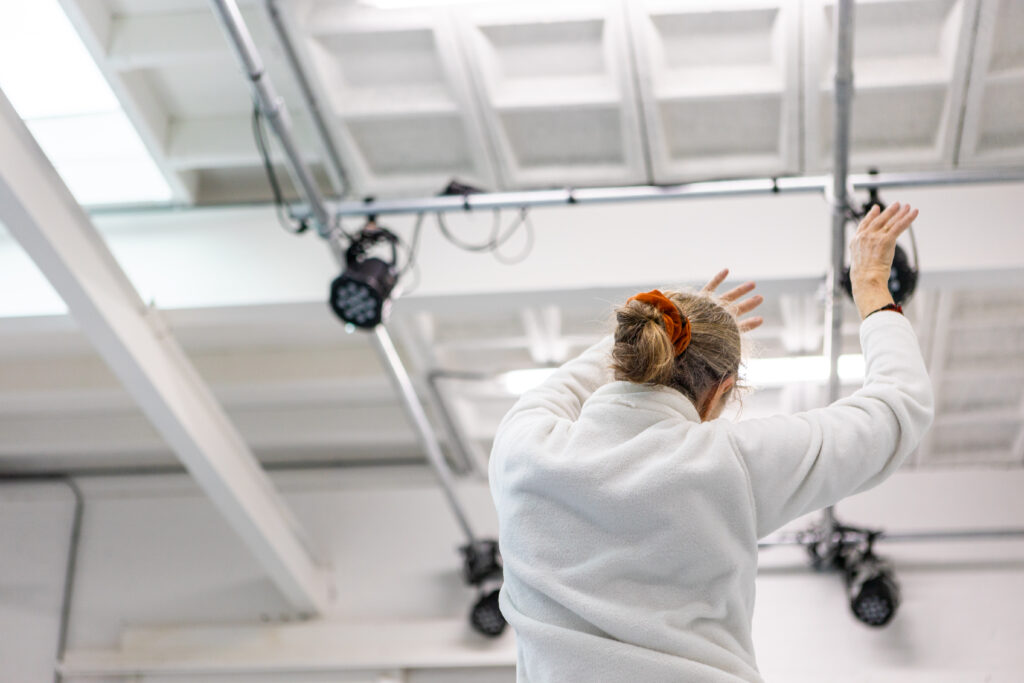
They chose one of the memories and explored how to share that memory without language. Only with the body, with images and movements. On the second day, Javier asked the group to explore the space again, only this time with their eyes closed. Where on the first day they touched objects with their eyes, they now did so with their hands. They have continued to search for memories of movement.
For Felmy, one of the participants of the Tilburg community, these were memories of movement around horse riding and ballet.
Then they had to choose the three most important movements and made a statue of them.
Felmy mentions that it was very liberating to deal with memories in a different way. We are used to storing memories in images or stories.
Sometimes in scents.
Sometimes in sounds.
But memories are apparently also hidden in movements.
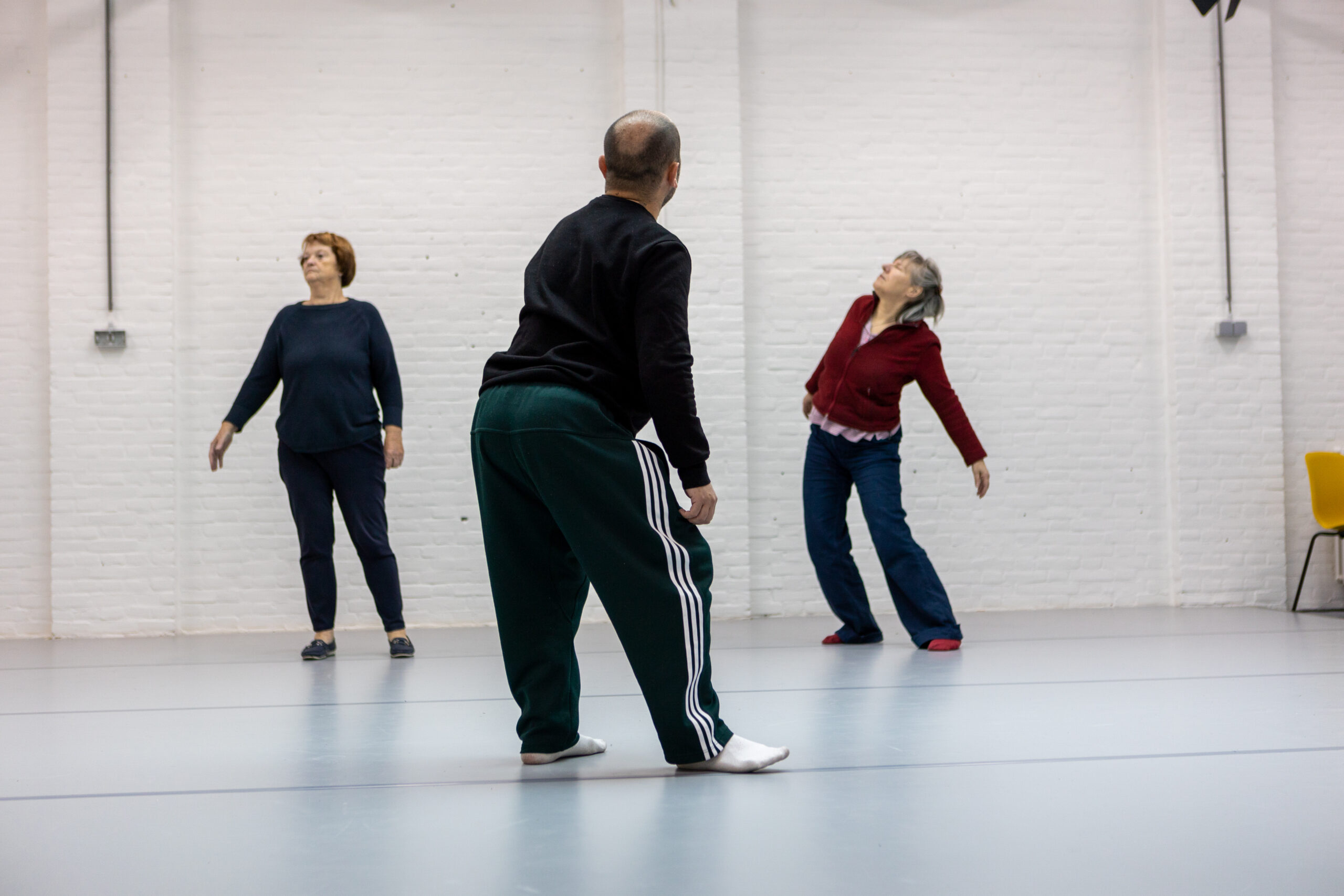
Pand18 in ‘s-Hertogenbosch
The first contact between Javier and the ‘s-Hertogenbosch community was loud and cordial, he had a feeling of home immediately. It reminded him of Spain to certain energy. On this first day Javier started by saying that he wasn't only interested in stories and asked the groups about the week's expectations.
“Storytelling through dance, having fun, feeling free and good,” Aantje wrote down. She is one of the participants of the ‘s-Hertogenbosch community.
The introductory assignment was different than usual. In pairs they introduced themselves as ‘the other’. For example, Nina and Aantje were a duo and Nina introduced herself as Aantje, and Aantje as Nina. Both in words, in facial expression and attitude they transformed to the other.
Another scene: rays of light flashed from everyone's fingers, followed by the eyes, the elbows, the knees, and the tailbone. With those rays of light, they drew or wrote the memories in the air. It became a choreography.
Like the Tilburg group, they too have worked with statues, memories, and identity.
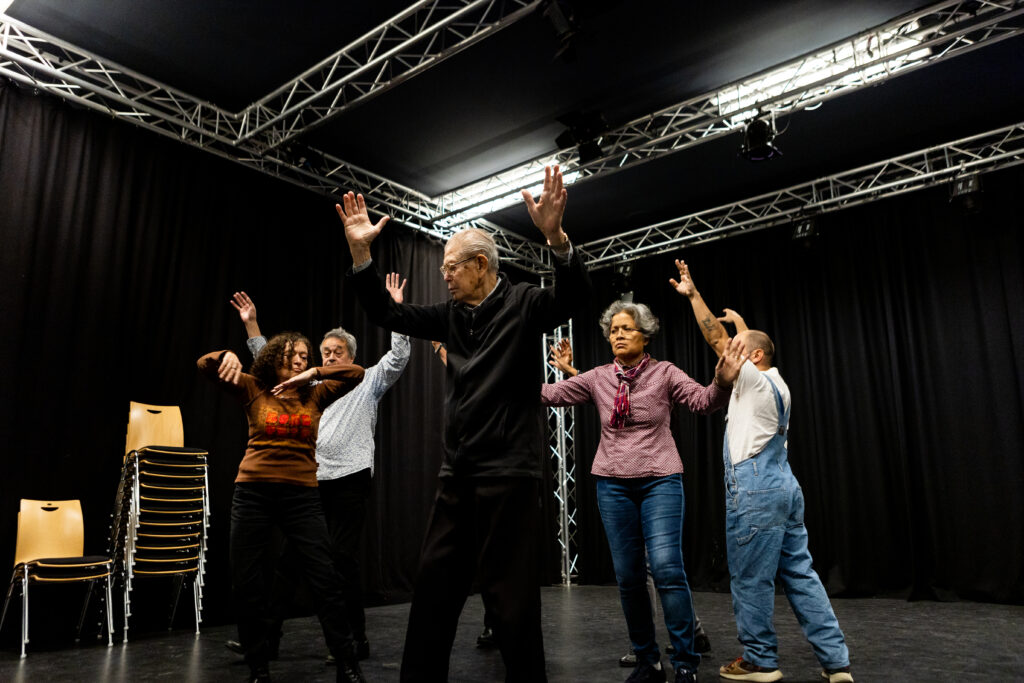
Than, people had to face each other two by two with the mirroring exercise. No one was the leader, no one the follower. The images merged spontaneously.
What about the same side by side? It appeared to be more difficult for many, except for Mr. Middel and Aantje, because they both have QiQong experience.
Together
On the last day of the workshop series both communities met in ‘s-Hertogenbosch in the space of Boulevard.
"The atmosphere he creates is so nice!" someone says.
The theme of dancing in your shoes came up. Javier worked a lot on the theme of ‘identity’: participants were allowed to walk out of the group, raise their hand and say how they identify themselves. 'I feel like a woman', 'I am Indo', 'I am afraid when I walk alone in the street at night', 'I am a mother', 'I feel young'. If someone agreed with the statement, they came to stand with that person. Sometimes there were large groups, sometimes two stayed behind. The idea was not to talk, but to respond intuitively.
Are you going to stand by someone, or not, or maybe halfway?
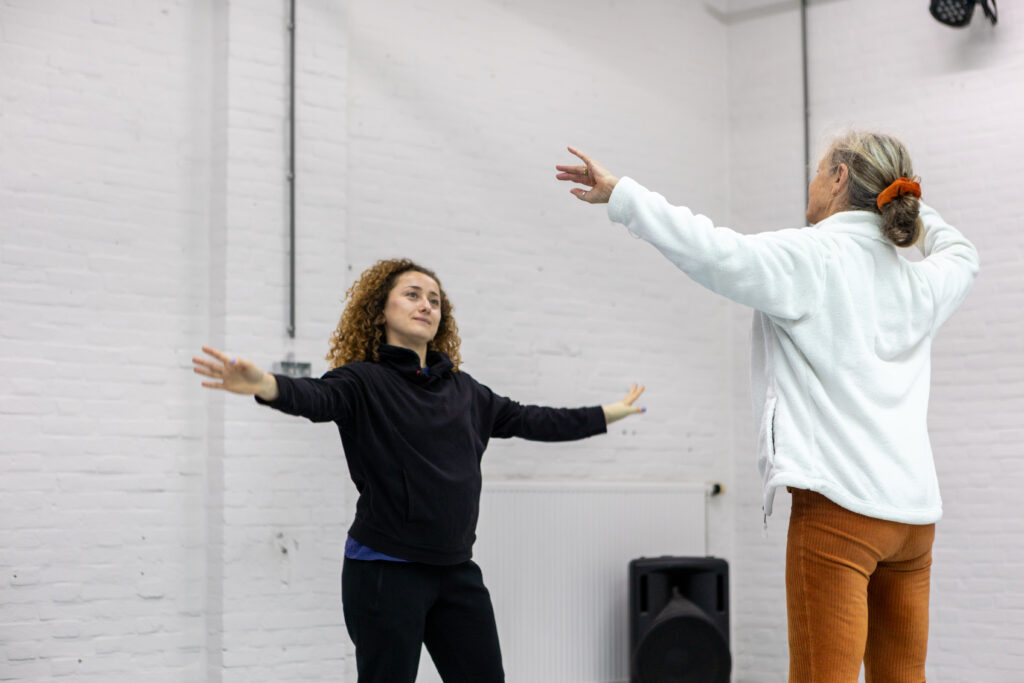
At the end of this session, Javier put three post-it’s on the floor with the words ‘race’, ‘sexuality’, and ‘gender’ on them. All participants were allowed to place the movement memories they had chosen on the second workshop day in a category.
Where does the memory of movement fit into?
They performed the movements in a small group per category, starting with the statue. From that the memory flowed in slow motion. Especially the presenting to each other left an impression on both Felmy and Aantje.
Felmy mentioned that thanks to this workshop she got an image of what connects them as Tilburg women. She is curious to see what will follow from this and she thinks it would be interesting to search more gender-specifically.
Aantjes expectations came true. She laughed a lot, felt free, and had fun. She liked that it wasn't about the Indies past, but about themselves. About their own identities, alongside of their common ones.
Moments that their bodies hopefully store in their movement memory.
Want to know more about the people of Tilburg and ‘s-Hertogenbosch? Find them in the Communities map and learn more.

